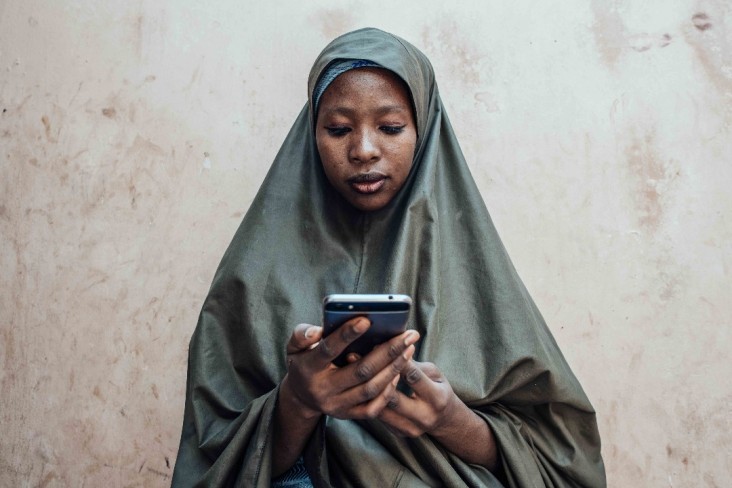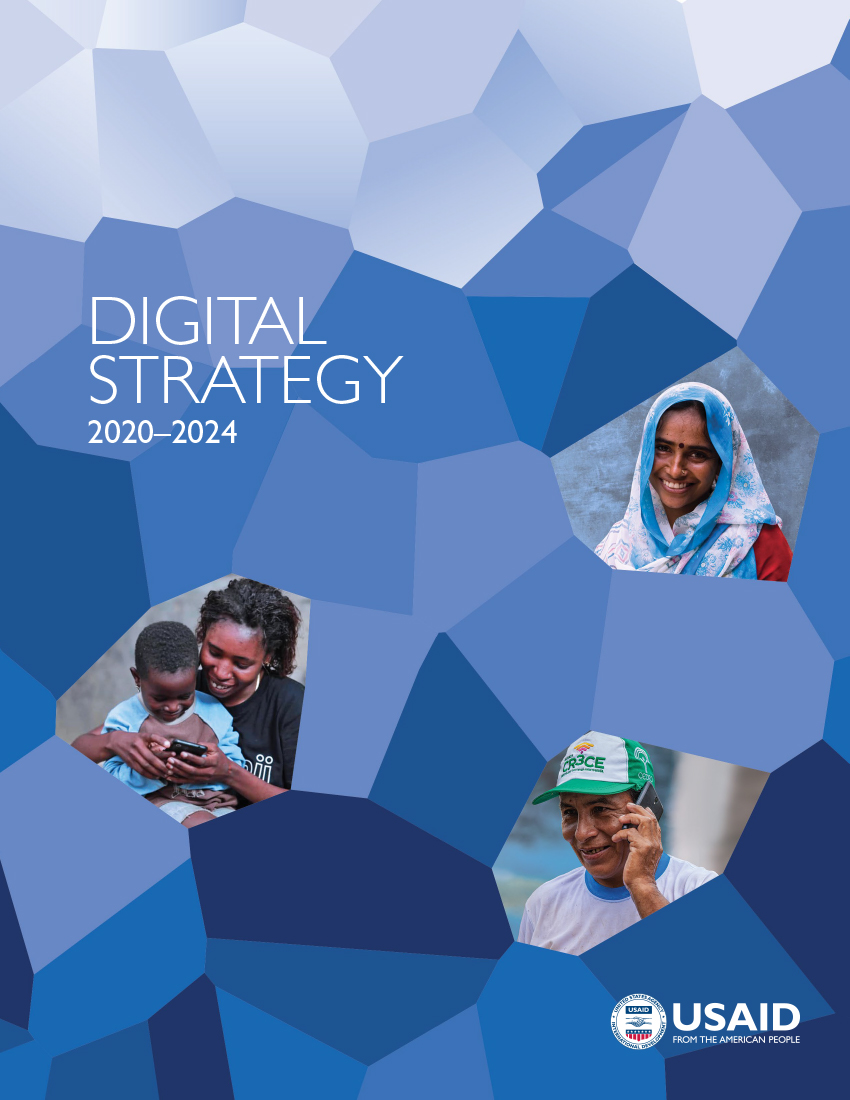- What We Do
- Agriculture and Food Security
- Democracy, Human Rights and Governance
- Economic Growth and Trade
- Education
- Environment and Global Climate Change
- Gender Equality and Women's Empowerment
- Global Health
- Humanitarian Assistance
- Transformation at USAID
- Water and Sanitation
- Working in Crises and Conflict
- U.S. Global Development Lab
Digital Strategy
Speeches Shim

Countries around the world are in the midst of a historic digital transition. The rapid development and adoption of digital technology are transforming industries, governments, economies, and societies. Digital ecosystems—the stakeholders, systems, and enabling environments that together empower people and communities to use digital technology to gain access to services, engage with each other, or pursue economic opportunities— hold immense potential to help people live freer, healthier, more prosperous lives. These ecosystems can help drive economic empowerment and financial inclusion, advance national security, support accountability and transparency in governance, introduce new and innovative health solutions, and make development and humanitarian assistance more efficient and effective.
Digital transformation comes with the risk of increasing inequality, repression, and instability. Malign actors capture digital infrastructure to advance divisive messaging, crime, and illicit finance. Despite the global prevalence of mobile phones and the Internet, the reality in many communities does not yet reflect the potential of a digital ecosystem that drives sustainable and equitable growth. Vulnerable or marginalized groups often find themselves excluded from the digital ecosystem because of inadequate infrastructure or a lack of affordable or relevant products, services, and content; or because political, social, environmental, or economic factors inhibit equitable uptake.
In this Strategy, we use the term “digital technology” not only to describe a type of technology but also to refer to the platforms, processes, and range of technologies that underpin modern information and communications technologies (ICT), including the Internet and mobile-phone platforms, as well as advanced data infrastructure and analytic approaches.
Now more than ever, as the global development community works to deliver life-saving assistance and relay crucial information in the face of the pandemic of COVID-19, the role of digital technology is undeniable. Teachers deliver lessons remotely to homebound classes; health care workers diagnose patients via telemedicine to minimize their risk of exposure; and people worldwide seek out online information about the pandemic’s impact on their lives and livelihoods. Across all of these activities, digital technology is what allows us to remain connected even while physical distancing requires us to be apart. It is more important than ever for USAID to help communities be resilient in the face of threats like this global pandemic, by ensuring all countries have robust digital ecosystems that are open, inclusive, secure, and of benefit to all.
In light of this, The U.S. Agency for International Development (USAID) Digital Strategy (2020-2024) will position the Agency to advance our mission—to end the need for foreign assistance—through digitally supported programming that fosters the Journey to Self-Reliance in our partner countries and maximizes the benefits, while managing the risks that digital technology introduces into the lives of the communities we serve.
The Digital Strategy centers around two core, mutually reinforcing objectives:
- Improve measurable development and humanitarian-assistance outcomes through the responsible use of digital technology in USAID’s programming; and
- Strengthen the openness, inclusiveness, and security of country-level digital ecosystems.
These objectives, and USAID’s approach to achieving them, support the goals and principles outlined in key policy documents, including the USAID Policy Framework, the Department of State-USAID Joint Strategic Plan, and the U.S. National Cyber, National Security, and Counterterrorism Strategies.
A “digital ecosystem” comprises the stakeholders, systems, and enabling environments that together empower people and communities to use digital technology to gain access to services, engage with each other, or pursue economic opportunities. See Annex III: Glossary for examples of the critical components of a digital ecosystem.
USAID will work to improve the efficiency and effectiveness of foreign assistance through the consistent and responsible use of digital technology in our development and humanitarian programming. Through our programmatic investments, USAID will work to strengthen the critical components of digital ecosystems that enable sustainable growth in a digital age: a sound enabling environment and policy commitment; robust and resilient digital infrastructure; capable digital service-providers and workforce; and, ultimately, empowered end-users of digitally enabled services.
As we become a more responsive, field-oriented Agency that fosters self-reliance around the globe, USAID must consider the capacities and commitment in the countries where we work in order to capitalize on the opportunities and address the risks inherent in digital systems. USAID’s investments in country-level digital infrastructure and systems must lead to sustainable ownership and management by local governments, citizens, and the private sector. Where capacity is lacking, we can build our partners’ technical capabilities to oversee these systems and responsibly leverage the data they produce to inform their own decisions. Where commitment is low, USAID can empower and equip civil society and the private sector to navigate complex and rapidly evolving digital ecosystems and hold governments accountable. For communities to achieve self-reliance in the digital age, open, inclusive, and secure digital ecosystems that preserve and protect the rights and agency of individuals are critical. The proper use, understanding, and application of technology is a development imperative.
USAID will take a multi-pronged approach, implemented under the leadership and authorities granted to various Operating Units (OUs) within the Agency to achieve the objectives of the Digital Strategy. Close consultation and collaboration with governments, civil society, the private sector, and local communities in countries where we work will guide this approach. We will work to develop the tools and resources necessary to provide effective development and humanitarian assistance in a digital age; we will build capacity to better navigate the unique opportunities and risks that digital technology presents across USAID’s Program Cycle; we will accelerate the transition to a default position of leveraging digital technology responsibly and appropriately in our programming; and we will invest in our significant human capital to continue to build the USAID of tomorrow.
USAID will work with U.S. Government interagency partners and coordinate with interagency initiatives to implement the objectives of the Digital Strategy; address challenges and capitalize on opportunities in countries in which we work; and maximize positive outcomes across development, humanitarian, security, health, and human-rights efforts.
Implementation of the Digital Strategy will start in a subset of target countries and extend to all USAID OUs over its five-year span. The launch of the Digital Strategy will shepherd the creation of a Digital Learning Agenda to promote collaborative exploration of the highest-impact pathways for inclusive, sustainable growth of digital ecosystems. Following the Strategy’s launch, USAID will release dedicated guidance and training materials to support our Missions and Bureaus throughout implementation, as well as a Monitoring and Evaluation Plan that will enable us to evaluate the Strategy’s impact over the next five years to ensure continual learning and adaptation in a rapidly evolving digital age.

The USAID Digital Strategy is a development policy document focused on the promotion of secure, open, and inclusive country-level digital ecosystems and the programmatic use of digital technology in the Agency’s development and humanitarian assistance, which we commonly refer to as “digital development.” While the Digital Strategy primarily focuses on enhancing USAID’s programmatic activities, the partnership and leadership of USAID’s operational components are crucial to executing the Strategy, including the Bureau for Management (e.g., the Office of the Chief Information Officer [M/CIO] and the Office of Acquisition and Assistance [M/OAA]), the Office of Human Capital and Talent Management (HCTM), and the Office of the General Counsel (GC).
This Strategy is a complement to the authorities and responsibilities of these operational entities, and the Agency’s Regional and Pillar Bureaus will execute it in partnership with them. The implementation of the Strategy will be consistent with all applicable laws, including, but not limited to, the Clinger- Cohen Act of 1996, Electronic Government (eGov) Act of 2002/The Federal Information Security Management Act (FISMA) of 2002, the Federal Information Security Modernization Act of 2014, the Federal Information Technology Acquisition Reform Act of 2015, the Foundations for Evidence-Based Policymaking Act (Evidence Act), and the Grants Oversight and New Efficiency Act.



Comment
Make a general inquiry or suggest an improvement.